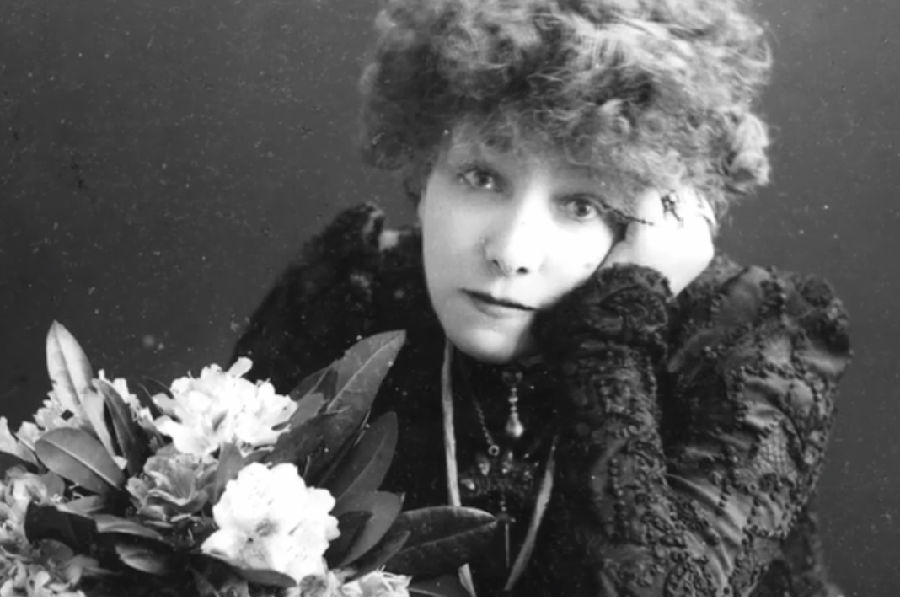Your wedding day is supposed to be the happiest day of your life.So why do these people look like they're going to a funeral?
婚礼当天本应该是大家一生中最快乐的时光。那这些人的表情怎么看上去是在参加葬礼一样凝重?
But it wasn't just formal occasions.
然而,并非婚礼这种正式场合的照片才这样。
It was teens, children, and lots of people with mustaches. Why didn’t people smile in old pictures?
十几岁的青少年、儿童、一个个留胡须的中年人的照片都是这样。为什么老照片里的人都不笑呢?
The simplest explanation is exposure time. That's basically how much light a camera needs to record an image.
最简单的解释就是曝光时间,也就是相机拍摄图像需要的曝光量。
The longer the shutter is open, the longer the film is exposed to light.
快门打开时间越长,胶片暴露的时间越长。
Early cameras and film did took longer,
早期照片和电影的拍摄都需要很胀时间,
so the thinking’s that it was easier to hold a serious expression than a smile if you were waiting minutes for your portrait.
而人们的看法是,在等待拍摄的那几分钟里,保持严肃的表情比保持微笑更容易。
See this 1838 picture by Louis Daguerre?
看见Louis Daguerre这幅1838年的照片了吗?
It’s blurry because it probably took 10-15 minutes to take.
照片看起来很模糊,因为拍这张照片花了长达10-15分钟的时间。
All the people presumably moved during exposure — except for this bootblack and the guy getting his boots polished.
所有人都可能在曝光过程中走动了 - 除了这个穿靴子和那个给他擦鞋的人。
You’d pose for a normal picture and a blurry one came out.
你明明是准备拍一张正常的照片,拍出来的却是一张模糊的照片。
But that problem was...fixed.
然而,这个问题......后来被解决了。
Rapid advances in film technology, as well as commercial availability, made it easier to take pictures quickly.
电影技术的快速发展以及商业化的推进使得快速拍摄变得更加容易了。
By the 1870s, bleeding edge photographers like Eadweard Muybridge were taking photographs that could split a second.
到十九世纪七十年代,Eadweard Muybridge之类的前沿摄影师已经只需要一秒钟就能拍出照片了。
To understand the real reason old pictures were so serious, you have to understand what portraits meant to people back then.
要想弄清楚为什么老照片里的人表情都很严肃,大家就要了解肖像对于当时的人的意义。
Remember, before there were photos, portraits were….painted.
记住了,在照片出现之前,肖像是......画出来的。
They were time-consuming, long-lasting and one-of-a-kind.
那时,画一幅肖像虽然耗时,但能够长期保存,而且是独一无二的。
That scarcity made the occasion pretty serious.
这种稀有感就让这一活动变得严肃起来了。
And that mentality carried over to early photographs.
这种心态一直延续到了照片出现早期。
Mark Twain, a professional humorist, said near the turn of the 20th century
马克吐温,一位幽默高手,在20世纪初接近尾声的时候曾经说过,
that “...there is nothing more damning to go down to posterity than a silly, foolish smile caught and fixed forever.”
“......没有什么比传承一张被抓拍到愚蠢无比的微笑的照片的罪恶更深重的了。”

This is a guy who wrote stories about jumping frogs.
他就是写跳蛙故事的那个家伙。
But his viewpoint was typical.
但他的观点很有代表性。
Take, for example, the oddly popular practice of posing dead bodies for “lifelike portraits.”
就拿那种奇怪的拍死尸造型的肖像照的流行做法来说。
The photos weren’t a snapshot. They were a passage to immortality. A record of one’s existence.
这些照片不仅仅是一张快照,而且是通往永生的道路,是存在的证明。
By looking at the exceptions, it’s easier to understand why most portraits were so grim.
通过研究那些例外,我们就很容易理解为什么大多数肖像照都那么严肃了。
There are lots of smiling Victorians, hiding in photo collections around the world.
有很多带着微笑的维多利亚照片,这些照片如今已经被世界各地的人收藏起来了。
As early as 1853, Mary Dillwyn captured a boy’s smile on camera.
早在1853年,玛丽·迪温就用相机捕捉到了一个男孩的笑脸。
Victorians were not constantly miserable —they just usually got serious when they thought a portrait was being taken.
维多利亚时代的人并不总是过得很悲惨 - 他们只是会在拍照的时候变得很严肃。
As cameras became more common and photography improved, aesthetics changed and smiles returned.
随着相机的普及以及摄影技术的提高,人们的审美也发生了变化,微笑又回到了镜头之中。
Later movies expanded the possibilities of recording real life.
后来,电影的发展使得记录真实生活变成了可能。
Portraiture broke free from the technology and aesthetics of painting.
画像类的照片也摆脱了绘画的技术和审美理念。
They discovered the possibilities of a new medium.
他们发现了电影这种新媒体的无限可能。
People always knew how to smile. They just had to learn how to show it.
其实人们通常是知道如何微笑的,要学习的只是如何在镜头前展示微笑。
So one of my favorite old photographs was somebody smiling, actually comes from an early 1900s anthropological expedition to China.
我最喜欢的一张老照片就是某个人在笑的照片,这张照片实际上是20世纪初人类学去中国考察的时候拍的。
It was taken by Berthold Laufer and the American Museum of Natural History has the photo.
摄影师的名字叫Berthold Laufer,美国自然历史博物馆收藏了这张照片。
Which is absolutely perfect.
这张照片堪称完美。
This photo shows that the attitudes in old photographs really were about aesthetics, not technology.
这张照片表明,老照片的拍摄理念是审美而不是技术。
And if you didn't have an idea of a how a photo should look like, it could look like anything.
如果你不知道照片应该是什么样子,那你拍出来的照片就可能有无限可能。
And in this case, that is absolutely perfect.
这么看的话,这张照片绝对称得上完美。


